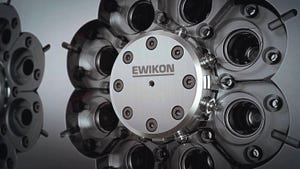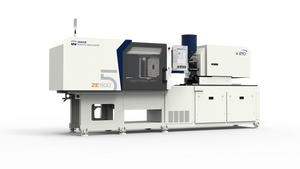Styrene-acrylonitrile, or SAN, is the first copolymer in this series of articles. Copolymers are produced by copolymerizing two different monomers. In this instance general purpose polystyrene (GPS) and acrylonitrile are combined to produce SAN, which has properties different from either of the original monomers.SAN was discovered at I.G. Farben Industries in 1932. In 1937 the company commercialized the material in Germany for coatings and lacquers. Monsanto received a U.S. patent for its Lustran SAN in 1948.
September 1, 2003
Styrene-acrylonitrile, or SAN, is the first copolymer in this series of articles. Copolymers are produced by copolymerizing two different monomers. In this instance general purpose polystyrene (GPS) and acrylonitrile are combined to produce SAN, which has properties different from either of the original monomers.
SAN was discovered at I.G. Farben Industries in 1932. In 1937 the company commercialized the material in Germany for coatings and lacquers. Monsanto received a U.S. patent for its Lustran SAN in 1948.
A properly molded SAN part with smoothly blended contours and no sharp inside corners will exhibit greater toughness than that indicated by Izod testing. |
The production of GPS was expanded during WWII. The industry vigorously pursued peacetime applications, but these markets could not utilize all of the available GPS. Many modifications were made to adapt GPS to new applications. It was at this point in time that high-impact polystyrene (HIPS) and SAN entered the market. Volume increased steadily to approximately 20 million lb in 1960 and then exploded to 100 million lb in 1980. Sales subsequently leveled off due to the proliferation of other types of plastic materials.
Defining Characteristics
SAN is a random copolymer, amorphous thermoplastic known for its transparency, low creep, abrasion resistance, high tensile and flexural strength, and better chemical resistance than GPS. SAN’s transparency, stiffness, and cost place it in competition with GPS (see October 2002 IMM, pp. 46-48) and acrylic (see July 2003 IMM, pp. 34-35). With light transmission of 78 to 88 percent, SAN can match GPS at 88 percent, but is not as good as acrylic at 92 percent.
SAN normally contains 20 to 30 percent acrylonitrile. The properties of SAN can be easily modified by changing the percent of the two monomers. Increasing the amount of acrylonitrile results in higher tensile and flexural values, with improved heat and chemical resistance, while toughness and clarity are reduced. A tensile strength of up to 11,000 psi matches acrylic and surpasses GPS. SAN’s flexural modulus of 450,000 to 520,000 psi makes it stiffer than acrylic and GPS. A heat deflection temperature of 218 to 235F at 66 psi makes SAN as good as, or slightly better than, its two major competitors.
Editor’s note: Glenn Beall reminisces on the past 10 years in the design segment of injection molding. This is a year to celebrate anniversaries and changes. Patsy and I were married in 1953, the same year the Corvette was introduced. It is hard to believe that 50 years have raced by. I still recall seeing the first Corvette at the local Chevrolet agency. Every young man wanted one of those sleek little cars, but the $3600 sticker price was unthinkable for a flat-broke college student. I am not quite old enough to remember the launch of the Harley-Davidson and Ford Motor companies, but both are now celebrating their 100th anniversaries. Fast, low-cost, easy-to-use transportation changed everything. The use of plastics also changed everything, including cars. Everyone in the plastics industry has learned to live with constant change. The world was a very different place in 1993 when IMM was introduced. The economy rode a bubble to great heights before it burst and sank into a cesspool of dot-com nonsense and creative accounting. The world is in a state of political turmoil. Personal safety and financial well-being are now uncertain. The last decade also changed the way engineers design plastic products. The global economy’s incessant and unrealistic demands for lower costs and faster delivery have been major factors. Today fewer people are doing more work. Product development and travel budgets no longer provide enough time or money to do a thorough job. Today the designer’s change from the drawing board to the computer is nearly complete. The Internet, enhanced CAD, and simulation software have irreversibly changed and improved the way designers work. These evolving programs must be made faster and easier to use. This will happen, and the best is yet to come. |
Acrylic, GPS, and SAN are all handicapped by an impact strength of .3 to .6, .25 to .45, and .25 to .45 ft-lb, respectively. SAN is unique in this regard. It is a notch-sensitive plastic that results in low notched-Izod impact values. A properly molded SAN part with smoothly blended contours and no sharp inside corners will exhibit greater toughness than that indicated by Izod testing.
SAN is a relatively low-cost plastic with an average large-volume list price of $.70/lb and $.265/cu in. Once again, SAN fits neatly between GPS at $.535/lb and acrylic at $.87/lb.
Transparent applications include point-of-sale display racks, instrument windows and lenses, lipstick cases, refrigerator drawers, household tumblers, mugs, blender bowls, small pill bottles, medical connectors, window and storm door panels, and disposable cigarette lighter bodies. Industrial uses are for battery caps and cases, telephone parts, plumbing components, toilet seats, aerosol nozzles, small appliance housings, fishing lures, and air-conditioner and dehumidifier parts.
Designing with SAN
Wall thickness. It is difficult to mold good-quality parts with a thickness of less than .040 inch. A .060-inch wall is considered the preferred minimum thickness for good molding. Eight-inch-long parts have been molded with a .060-inch thickness; .500-inch-thick parts have been successfully molded with proper cycling conditions and careful attention to gate and runner design. Thick parts of this type may require annealing. Variations in wall thickness of up to 25 percent can be tolerated with adequate blending from thick to thin.
Radiusing. SAN is a notch-sensitive material. Every effort must be made to avoid sharp inside corners. Inside radiuses equal to 50 percent of the part’s wall thickness are recommended, but in the case of SAN even larger radiuses are desirable.
Molding draft angles. SAN is a hard, brittle material that requires smoothly polished cores and cavities. A 1¼2° draft angle has been successfully used, but 1°/side will result in shorter cooling cycle times. Even larger draft angles and draw polishing are recommended on transparent parts in order to avoid drag marks.
Projections. This material’s low mold shrinkage allows projections to be designed with a thickness equal to 80 percent of the part’s nominal wall thickness. The thickness of projections can be reduced to 50 to 60 percent of the part’s thickness in instances where sink marks cannot be tolerated.
Depressions and holes. With proper molding conditions, good-appearing weldlines with 80 percent retained strength can be produced. The location of gates must be carefully considered, as the resulting weldlines can distract from the appearance of transparent parts. SAN is a strong material and the cores that form holes must be polished and drafted. This is a notch-sensitive material and the corners on holes must be radiused. The length of unsupported cores should be limited to two and one-half to three times the thickness of the core pin.
Tolerances. SAN is a dimensionally stable material that is often specified for its dimensional repeatability. A .125-inch-thick part can be held to a “commercial” tolerance of 1.000 ±.003 inch. A “fine” tolerance would be 1.000 ±.002 inch.
SAN is a logical, lower-cost candidate for a see-through part that does not require acrylic’s superior transparency. If a transparent GPS component needs a little more impact strength or chemical resistance, SAN would be worth considering.
About the Author(s)
You May Also Like



